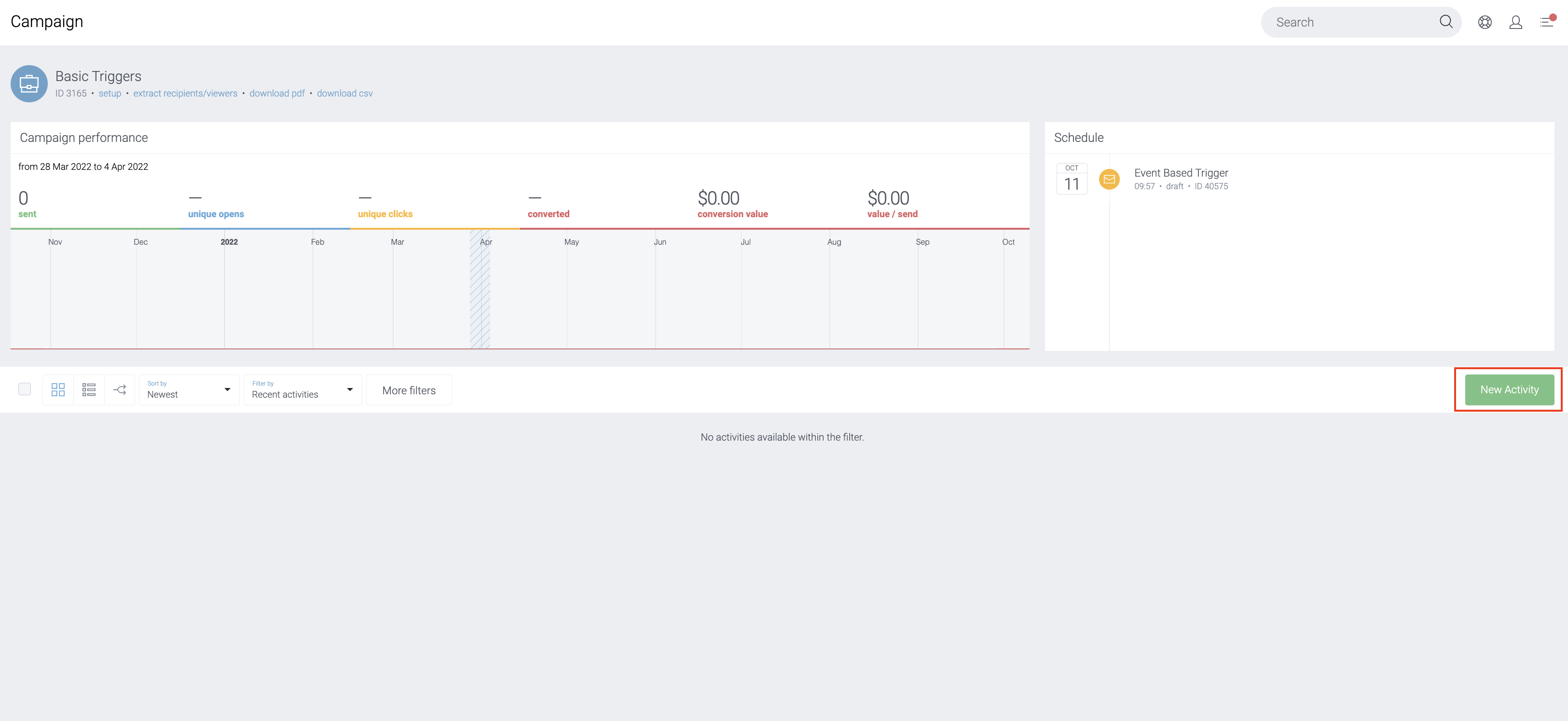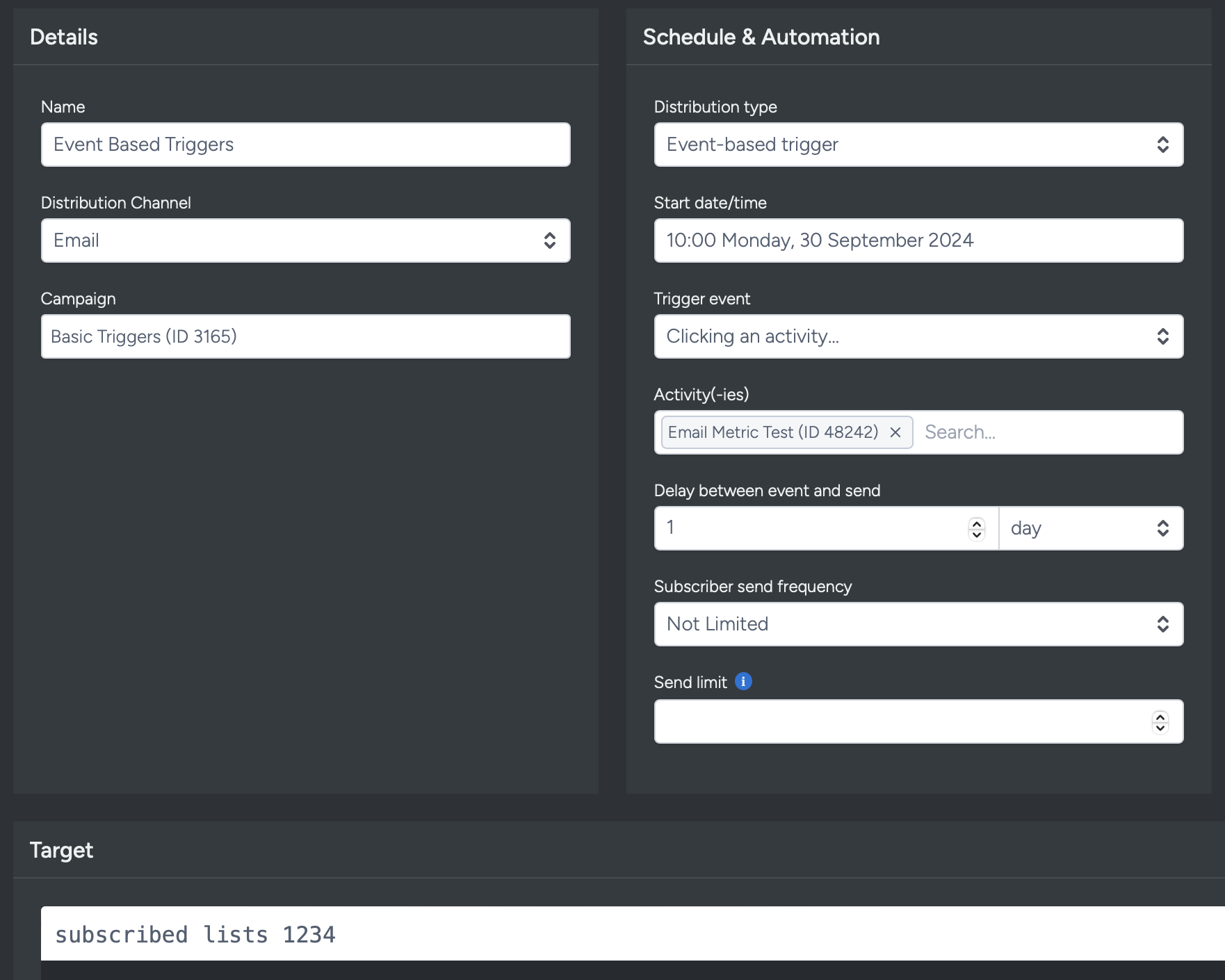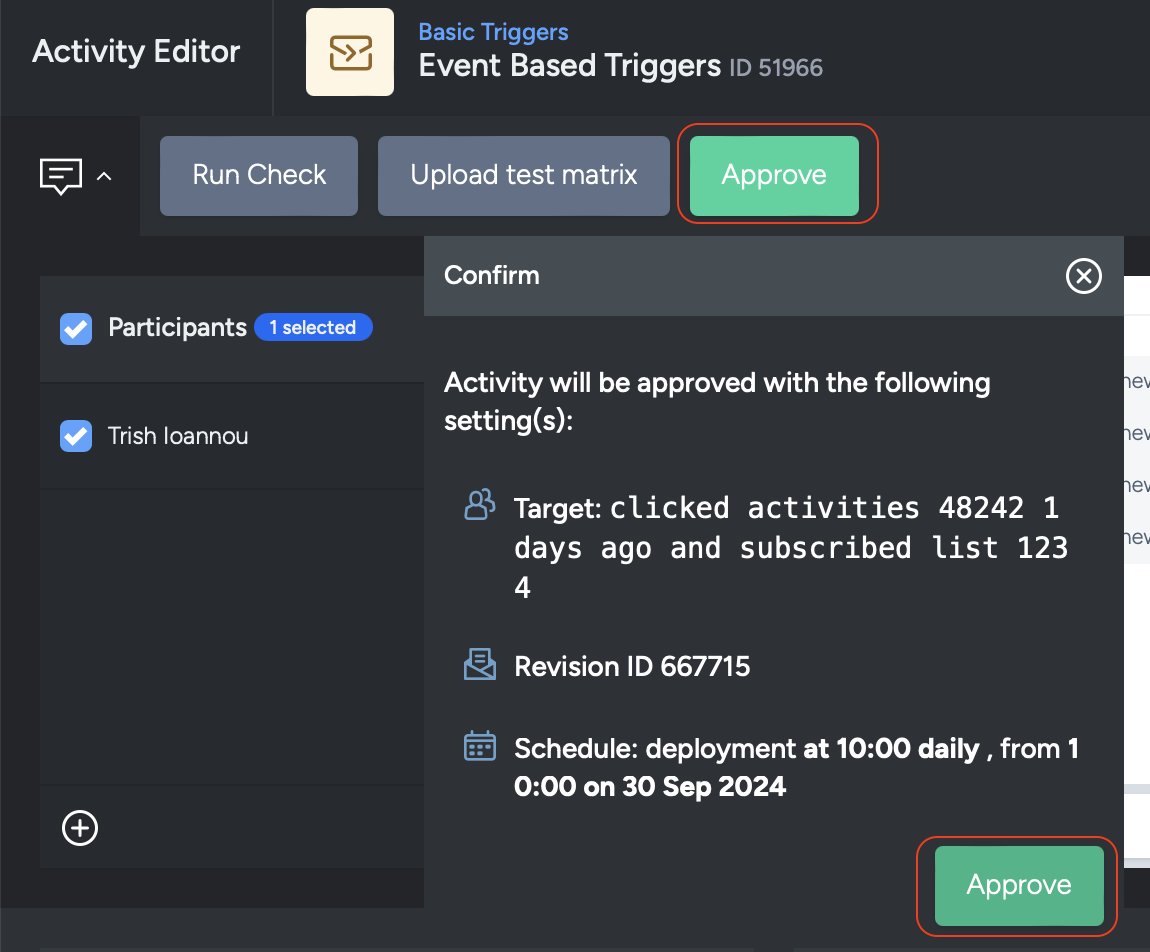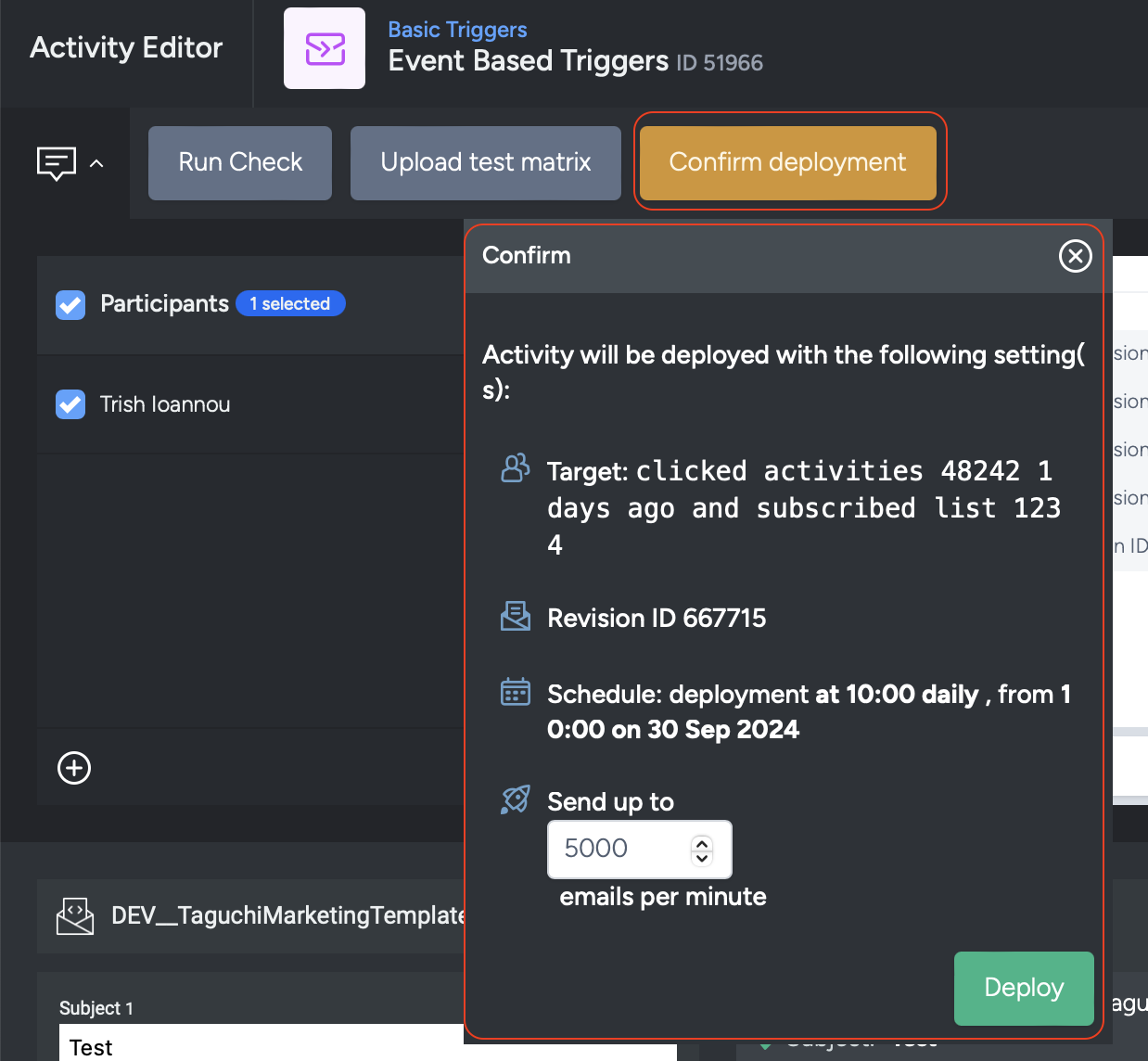- Support Home
- Knowledge Base
- Triggers And Automation
- Event Based Triggers
- Event-Based Trigger
Event-Based Trigger
In this article, we will show you how to set up an event-based trigger within Taguchi. Event-based triggers enable you to automate the sending of an activity in based on triggering events.
Read more about Event-Based Triggers.
Set Date/Time, Delay and Send Limit
The triggered activity needs to be configured to target subscribers based on an event, e.g. clicked an email, submitted a form, made a purchase etc.
The activity send can be delayed - on an hourly, daily, weekly, monthly, yearly basis based on your requirements. You can also set a send limit to abort the trigger when you want to prevent the activity sending if you have more than a certain number of recipients.
If you are setting up a new activity, click the 'New Activity' button in a campaign folder to set up a new activity. A setup screen will appear.

If you are editing an existing activity, simply navigate to the setup screen by either clicking 'the cog' icon in the activity card actions or within the activity header.

The setup screen will appear with activity options. From here you can set the following options:

- Distribution Type: Event-based trigger
- Date: If you wish to set your trigger to deploy at a later time/date, use the date picker and time picker to choose your desired date/time, otherwise the default date/time is set to fire the trigger immediately after the activity has been triggered/deployed.
- Trigger Event: Pick an option to trigger the activity based on the event. There are 8 options to choose from.
- Being sent an activity: This targets subscribers who were already sent a particular activity.
- Opening an activity: This targets subscribers who opened a particular activity.
- Submitting a form: This targets subscribers who submitted a form.
- Subscribing to a list: This targets subscribers who were added/subscribed to a particular last.
- Purchasing: This targets subscribers who made a purchase on your website (e.g subscribers who made a purchase of over $100)
- Abandoned: This targets subscribers who abandoned their cart.
- Viewed a webpage: This targets subscribers who viewed a webpage. You can target using the pageUri or url.
- Delay between Event and Send: Pick an option to trigger the activity hourly, daily, weekly, monthly or yearly (e.g if you schedule an event-based trigger - being sent an activity with a delay of 1 day, a subscriber that was sent activity on the 1st will receive the event-based trigger activity on the next day.)
- Subscriber Send Frequency: In this field, you can pick an option between 'send only once' or 'send once' every day/weeks/months/years (e.g if you choose 'send once', for an event - subscribing to a list, the subscriber will only receive the activity once.)
- Send Limit: You can use this field if you know how many recipients an activity should be sent to each time and you don't want to send it if there are more recipients than expected. If you leave this field blank, then this send limit won't apply. For instance, if there are 500 in this field and it targets subscriber list X which includes 1000 subscribers, the activity will not be sent at all.
Note: send limit should only be used for triggers and not immediate or scheduled broadcasts
Save the changes you make by clicking the save button.
Edit Activity Content
You can then begin editing your activity content. View the V5 User Guide for tips on creating your activity content.
Set Target Expression
Click on the 'target' link within the activity header.
Select and refine your target audience using the target expression builder and save your changes. For more information on target expressions, please refer to the Target Expression Reference.
If you set a frequent repetition cycle, remember to exclude subscribers who have already received the activity, otherwise the trigger will contine to send to the same subscribers. You can do this by adding
not sent activity Xto the target expression (where X is the activity ID).
Approve and Deploy
- Approve and deploy your activity to initiate the trigger by clicking the 'Approve' button.

- A small box will appear on the left for approval. There are 3 items for you to review:
- Activity target: review whether the final targeting is correct.
- Revision ID: review that the final version of your activity is the one you want to deploy.
- Schedule: review that the date, time and frequency of the deployment is accurate.
Click on 'Approve' to approve the deployment.
- Once approved, click on the confrim deployment button. Another box will appear, review the target, revision ID, schedule and set the activity's throttle rate.
Click the 'deploy' button.

- Once deployed, the red cancel deployment and suspend buttons will appear. Next to those, there will be a throttle input, which you can change anytime leading up to or during the deployment.
Next to that, there are two icons:
1. The paper plane indicates number of future deployments
2. The clock indicates the time of next deployment.
If you need to suspend the next scheduled deployment but allow it to send for future deployments thereafter, click on the suspend button.
If you want to stop the trigger from deploying completely, click on the cancel deployment button.

Several sample triggers are available, please refer to the Trigger Examples.
